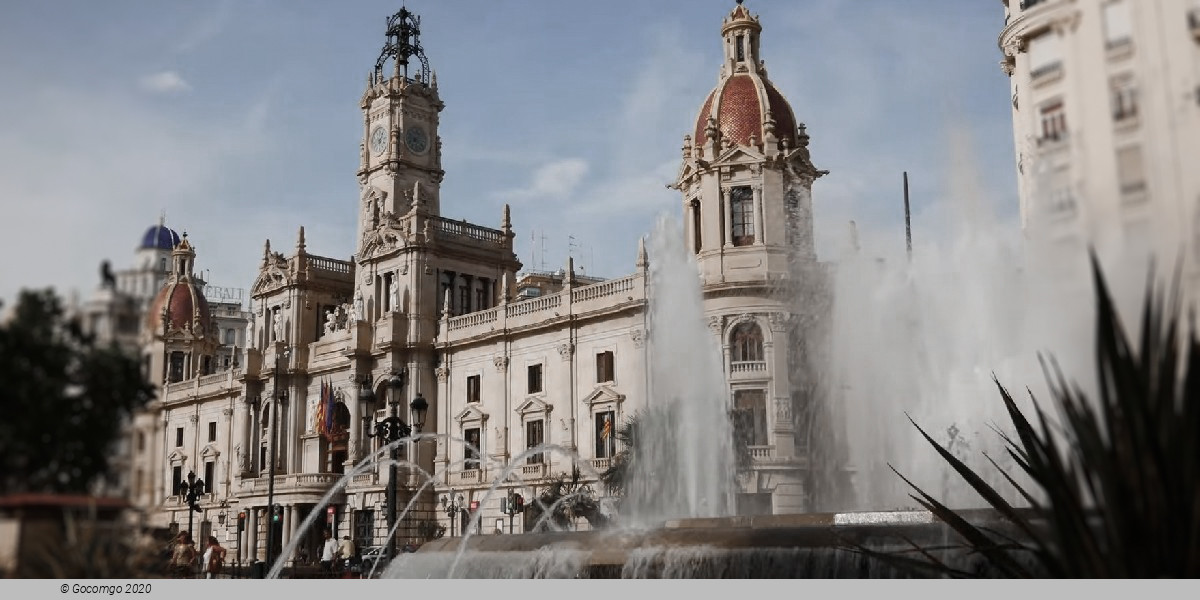Valencia

Valencia is the capital of the autonomous community of Valencia and the third-most populated municipality in Spain. It is located on the banks of Turia, on the east coast of the Iberian Peninsula, at the Gulf of Valencia, north of the Albufera lagoon. Valencia is known internationally for the Falles (Les Falles), a local festival held in March, as well as for paella valenciana, traditional Valencian ceramics, craftsmanship in traditional dress, and the architecture of the City of Arts and Sciences, designed by Santiago Calatrava and Félix Candela.
There are also a number of well-preserved traditional Catholic festivities throughout the year. Holy Week celebrations in Valencia are considered some of the most colourful in Spain.
Valencia was once the site of the Formula One European Grand Prix, first hosting the event on 24 August 2008, but was dropped at the beginning of the Grand Prix 2013 season, though still holds the annual Moto GP race at the Circuit Ricardo Tormo, usually that last race of the season in November.
The University of Valencia (officially Universitat de València Estudi General) was founded in 1499, being one of the oldest surviving universities in Spain and the oldest university in the Valencian Community. It was listed as one of the four leading Spanish universities in the 2011 Shanghai Academic Ranking of World Universities.
Every year, the five days and nights from 15 to 19 March, called Falles, are a continual festival in Valencia; beginning on 1 March, the popular pyrotechnic events called mascletàes start every day at 2:00 pm. The Falles (Fallas in Spanish) is an enduring tradition in Valencia and other towns in the Valencian Community, where it has become an important tourist attraction. The festival began in the 18th century, and came to be celebrated on the night of the feast day of Saint Joseph, the patron saint of carpenters, with the burning of waste planks of wood from their workshops, as well as worn-out wooden objects brought by people in the neighborhood.
This tradition continued to evolve, and eventually the parots were dressed with clothing to look like people—these were the first ninots, with features identifiable as being those of a well-known person from the neighborhood often added as well. In 1901 the city inaugurated the awarding of prizes for the best Falles monuments, and neighborhood groups still vie with each other to make the most impressive and outrageous creations. Their intricate assemblages, placed on top of pedestals for better visibility, depict famous personalities and topical subjects of the past year, presenting humorous and often satirical commentary on them.
19 March at night Valencians burn all the Falles in an event called "La Cremà".
The Setmana or Semana Santa Marinera, as the Holy Week is known in the city, was declared "Festival of National Tourist Interest" by 2012.
Major monuments include Valencia Cathedral, the Torres de Serrans, the Torres de Quart (es:Torres de Quart), the Llotja de la Seda (declared a World Heritage Site by UNESCO in 1996), and the Ciutat de les Arts i les Ciències (City of Arts and Sciences), an entertainment-based cultural and architectural complex designed by Santiago Calatrava and Félix Candela. The Museu de Belles Arts de València houses a large collection of paintings from the 14th to the 18th centuries, including works by Velázquez, El Greco, and Goya, as well as an important series of engravings by Piranesi. The Institut Valencià d'Art Modern (Valencian Institute of Modern Art) houses both permanent collections and temporary exhibitions of contemporary art and photography.

